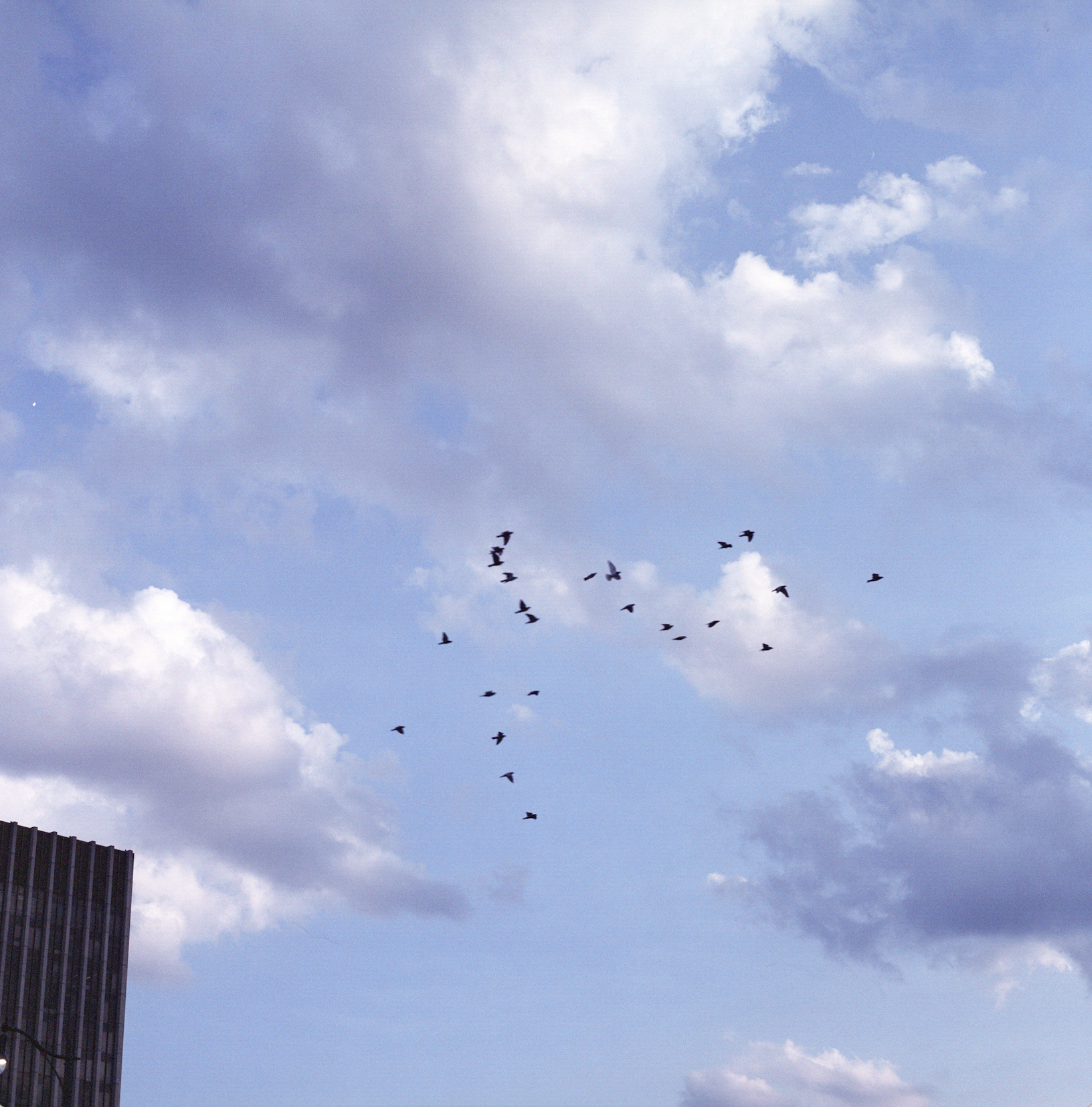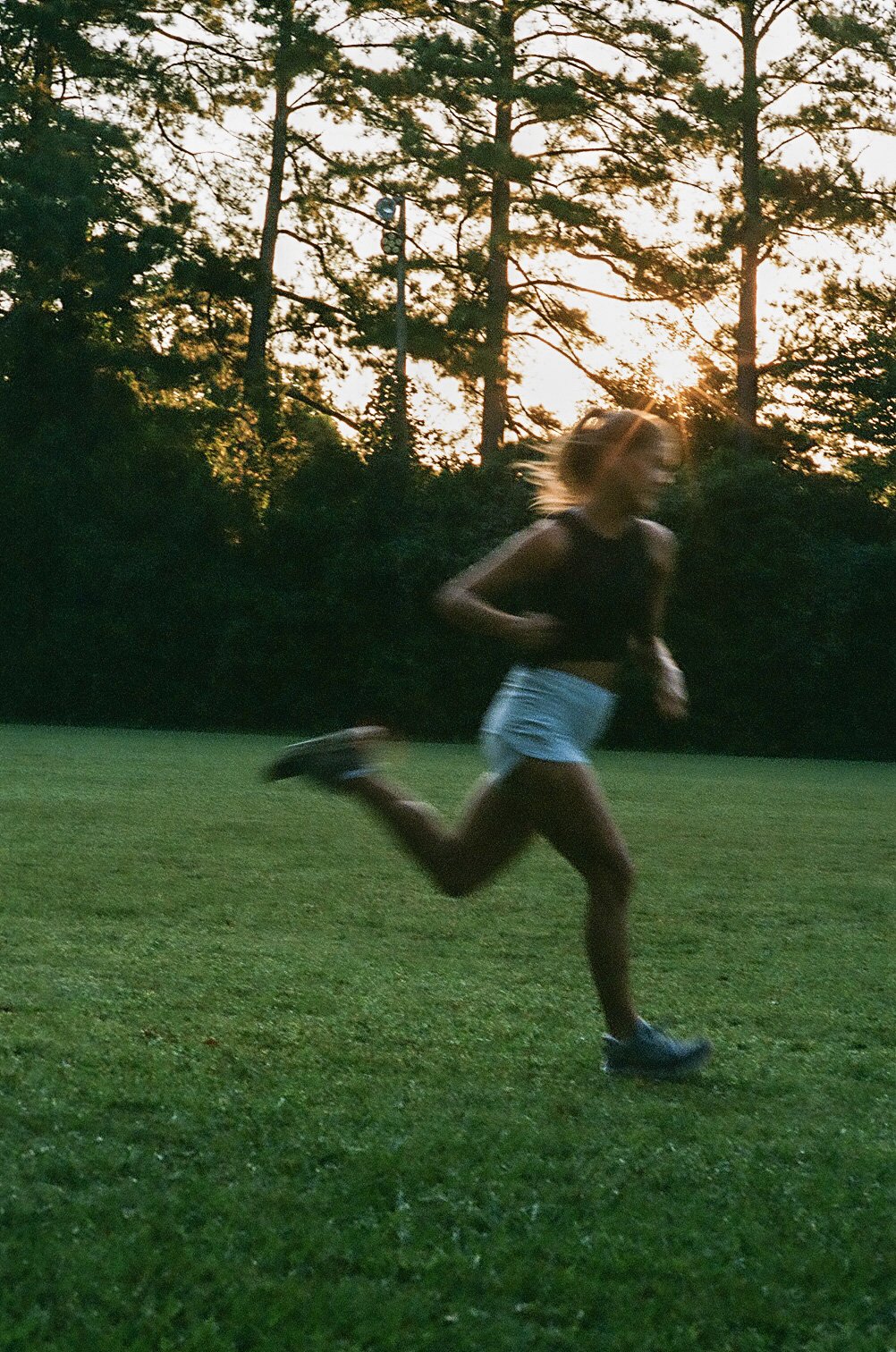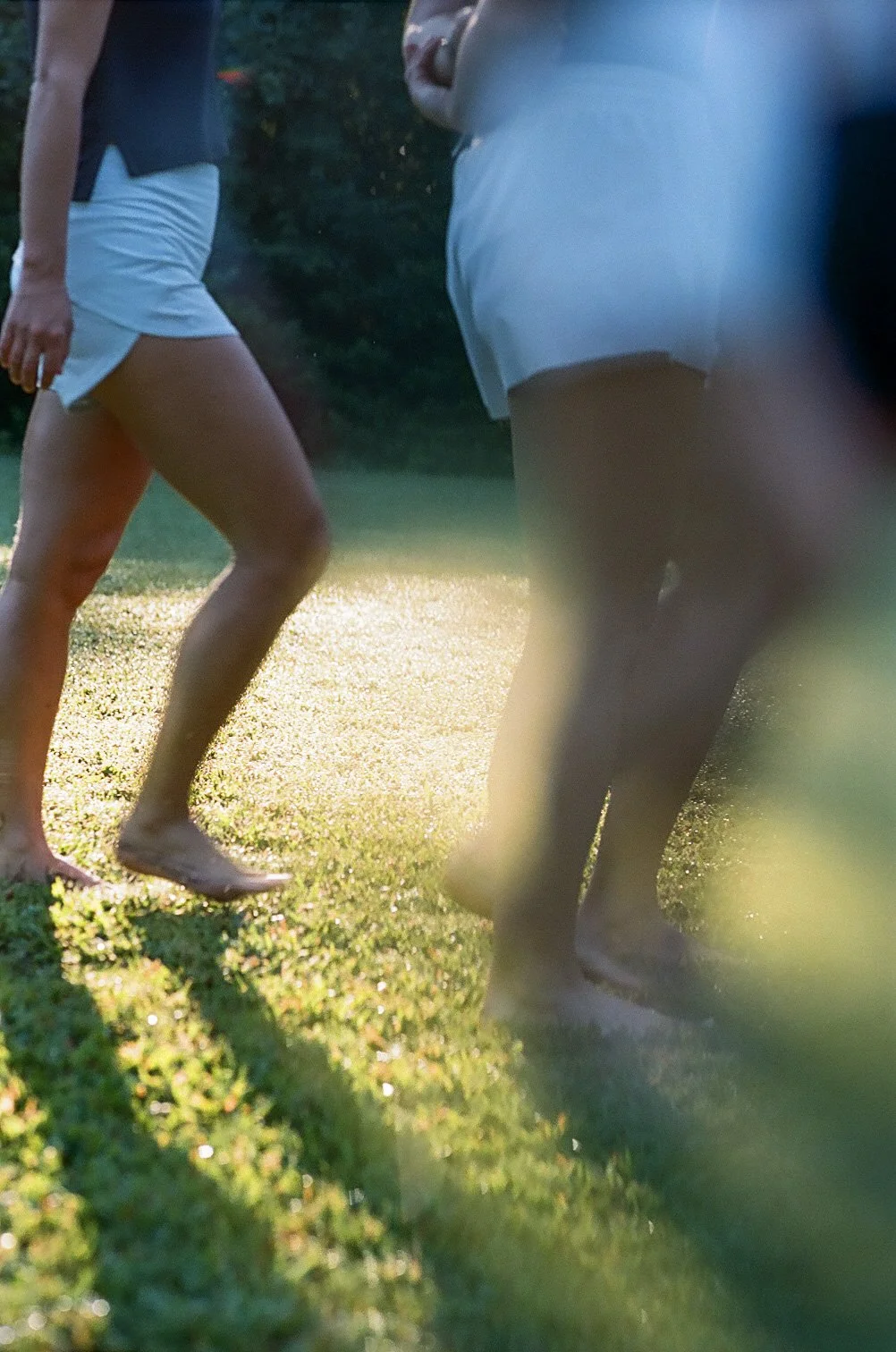
I have loved running for over 10 years.
First, as a way to build endurance for soccer, which was my sport of choice for most of my childhood. I would set a timer for 25 minutes and run laps on our cove.
While at this time running was largely a means to an end, and was underscored by a consistent, low frequency hum of self-loathing, it also offered a new way of engaging with my physicality, which felt empowering.
During my sophomore year of high school I quit soccer on a whim and joined the cross country team. 45min tempo runs. Strides. Carb loading. Kids puking at the finish line. 6am track workouts. Spikes. All norms of this new world. I loved it.
To be clear, I have never been particularly fast– I was not a notable athlete in terms of performance, and did not take the sport seriously enough to consider pursuing it past high school. What’s more, the eating disorder I developed in middle school made it nearly impossible for me to train for any length of time without injuring myself.
But the way running made me feel?
I couldn’t shake it.
So running stuck.

Now I love to run, but in a different way.
I have been in recovery from my eating disorder for about six years (give or take a few– never a linear process). This has fundamentally changed the way I relate to movement, and to my body.
But I still love to run.
When I tell people this, I feel the need to clarify how and why– I give the spiel, “no not that kind of running”– not the self-sacrificing running fueled by the pursuit of pain and suffering, or held together by rigidity and discipline, or motivated by some laser-focused, end-all-be-all goal.
It’s a fair assumption, considering this is the majority of the running modeled to us. “No days off,” “just do it,” “no pain, no gain…” the list goes on. We are bombarded by messaging that dictates what running is supposed to look like, or feel like.
What’s more, the metrics we are given to measure the “success” of a run– time and distance– encourage the relentless pursuit of linear progress.
“Writing honestly about running and writing honestly about myself are nearly the same thing." - Haruki Murakami
As I attempt to define how I love running, or what kind of running I love, I have found this idea from Murakami to be helpful and true.
This truth is most poignantly felt when I look back at how my relationship with running has changed, and how it so clearly reflects the change in the way I relate to my self. This is not to say that running itself is reflective of me, but rather the way that I engage with running is reflective of the way that I engage with my self.
In this way, running is helpful because it reveals the contours of something that is otherwise slippery; hard for me to grasp, like a shadow or a too-close reflection.

I love running that feels like a doorway, not like a hurdle.
This kind of running– the kind I’m interested in– feels expansive, full of possibility, and gives me a concrete way in.
A way into practicing new ways of relating to myself; new ways of being– a way to practice curiosity, noticing, rest, ambition, consistency, fluidity, creativity. These practices, even when contained within running, spill over into other areas of my life.
This is not to say that running is the only path to forge these new ways of relating to self, but I do find this particular path to be reliable and accessible– well-worn, and firmly-packed.
INTUITIVE RUNNING
“Intuitive running” is a term coined by Karly Borden, founder of the Public Run Club. It is characterized by understanding our bodies as being cyclical, and views running as a form of self-advocacy and self-nurturance. It is rooted in the desire to “stay close to the feeling” (Borden), and fosters a greater sense of self-trust, and self-acceptance. This is the best vocabulary I have found to put to the kind of running that feels like a doorway.

What does intuitive running look like?
I can’t really say because I only know how it feels. And I best know how it feels through first knowing how it does not feel.
Intuitive running does not feel dissociative, avoidant, or numbing. It does not ask us to abandon any aspect ourselves to complete a run. It does not result in injury and burnout. It does not rely on metrics or comparison to determine whether a run was “good” or “bad.”
Rather, intuitive running feels liberating– chest-expanding, playful, and curious. It does not mean only running slow. It does not mean running aimlessly, or with a lack of ambition.
It means embodying a full range of possibilities– holding space for the present moment. Staying close to the feeling. Whatever the feeling may be.
Not any certain feeling (noun), but the feeling (verb) itself.
This is how I have found running to be a doorway– a way to access a more full range of body, mind, and spirit– through presence.
Through feeling.
running to practice rest.
mind / release
running to practice rage.
heart / hope
running to practice …

